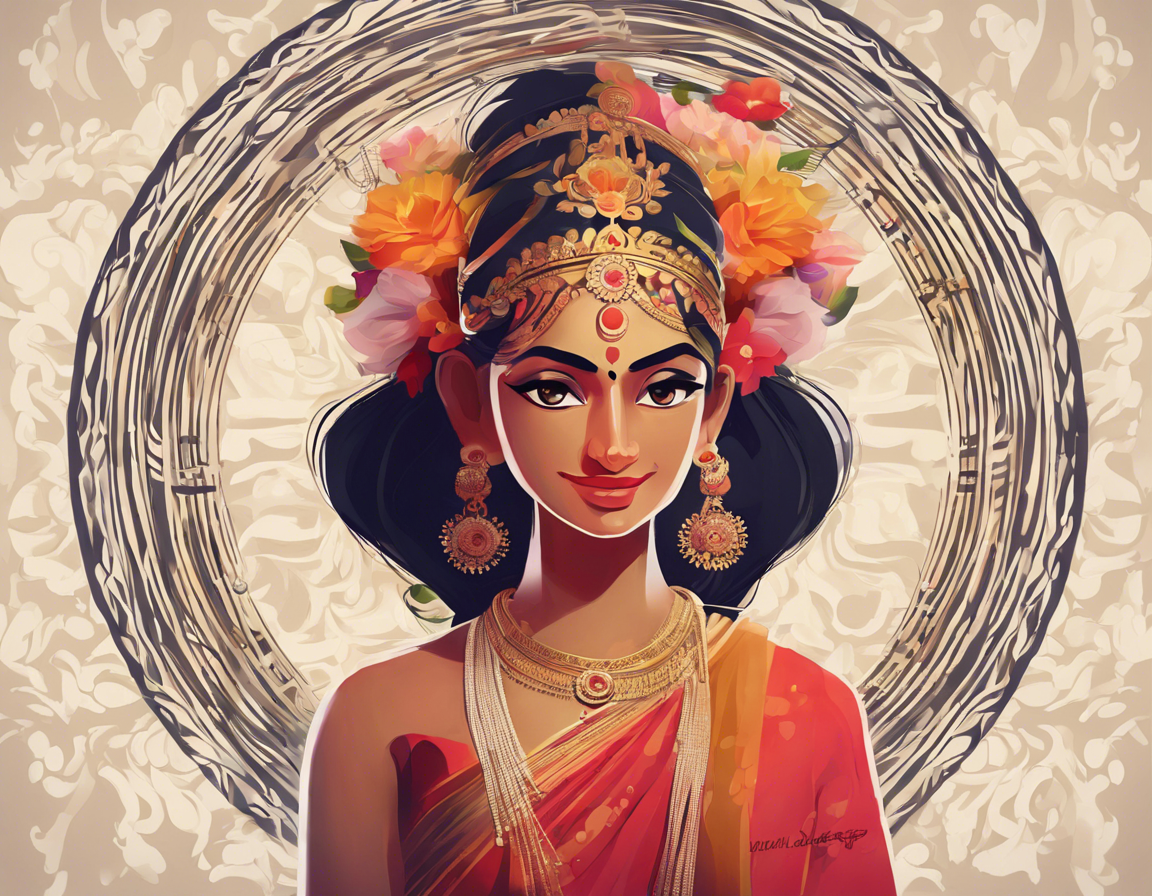A Kumari, in South Asian culture, is a young prepubescent girl believed to be the earthly incarnation of the Divine Mother, embodying purity, innocence, and power. Among the notable Kumaris is Kumari Srimathi, whose mystique has captivated many.
The Legend of Kumari Srimathi
Legend has it that Kumari Srimathi was chosen as a Kumari at the tender age of five, after undergoing a rigorous selection process that involved screening for physical, mental, and spiritual attributes. Srimathi’s selection was attributed to her ethereal beauty, grace, and wisdom beyond her years. As a Kumari, she resided in a sacred temple, where devotees would seek her blessings and guidance.
The Role of Kumari Srimathi
Kumari Srimathi’s primary role was to serve as a living goddess, bridging the gap between the mortal world and the divine realm. She was revered during religious ceremonies, festivals, and auspicious occasions, where her presence was believed to bestow blessings and protection on the devotees.
The Rituals and Traditions Surrounding Kumari Srimathi
Kumari Srimathi was required to adhere to a strict regimen of rituals and traditions, including daily prayers, meditation, and offerings. Her hair was left uncut, symbolizing purity and connection to the divine. Devotees would offer gifts and seek her blessings, believing her to possess supernatural powers.
The Controversies and Challenges Faced by Kumari Srimathi
Despite being worshipped and idolized, Kumari Srimathi faced numerous challenges and controversies. Critics questioned the ethical implications of venerating a child as a goddess, highlighting concerns about her education, socialization, and psychological well-being. Some activists called for the abolition of the Kumari tradition, citing the potential harm it could cause to the children involved.
The Legacy and Impact of Kumari Srimathi
Kumari Srimathi left a lasting legacy, inspiring devotion and fascination among her followers. Her story continues to spark debates and discussions about faith, tradition, and modernity in a rapidly changing world. While some view her as a symbol of divine grace and power, others see her as a poignant reminder of the complexities of religious belief and cultural practices.
Exploring the Cultural Significance of Kumari Srimathi
Kumari Srimathi’s story touches upon deep-seated cultural beliefs and practices, reflecting the intricate tapestry of South Asian spirituality and mythology. Her portrayal as a divine being incarnate challenges conventional notions of childhood, innocence, and divinity, inviting us to contemplate the mysteries of faith and devotion.
Frequently Asked Questions (FAQs)
- What qualifications are required to become a Kumari like Srimathi?
-
To become a Kumari, a young girl must possess specific physical, mental, and spiritual attributes deemed suitable by the selecting committee.
-
What responsibilities does a Kumari like Srimathi have?
-
A Kumari’s primary role is to represent the Divine Mother, bless devotees, and participate in religious ceremonies and festivals.
-
Is the Kumari tradition still practiced today?
-
Yes, the Kumari tradition is still practiced in certain regions of South Asia, although it has faced criticism and calls for reform.
-
How does being a Kumari impact a child’s upbringing and education?
-
Serving as a Kumari can significantly impact a child’s upbringing, leading to a unique lifestyle that revolves around religious duties and rituals.
-
What are some of the challenges faced by Kumaris like Srimathi?
- Kumaris face challenges related to their privacy, education, socialization, and mental well-being, given their elevated status and public scrutiny.
In conclusion, Kumari Srimathi’s enigmatic presence symbolizes the timeless allure of divine femininity and spiritual power in South Asian culture. Her story invites us to ponder the intersection of tradition and modernity, belief and skepticism, innocence, and wisdom. Through her legacy, we are reminded of the enduring mysteries that lie at the heart of human existence.
